Measuring vehicle transmission performance data and correlating the data with the driver’s seat-of-the-pants experience helps to make positive changes to the DSG transmission control strategy. APR has one of my favorite TCU tunes, but there is always room for improvements.
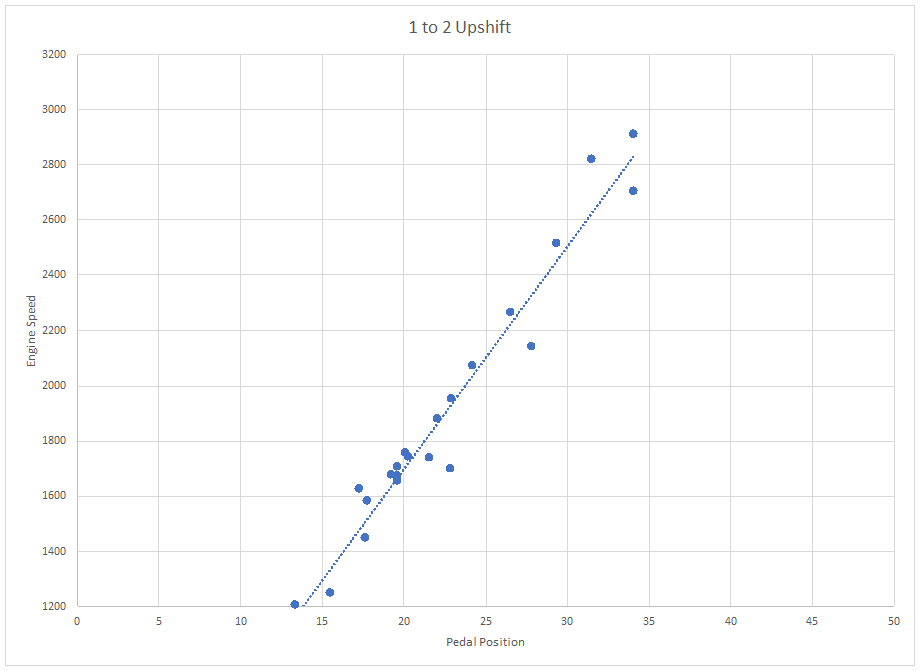
The first to second gear shift at very low pedal input occurs too soon with this tune. At almost 15% pedal input the transmission will shift to second gear at 1200 rpm.
As the chart below illustrates, when shifting from (1) to (2) around 1200 rpm when the shift is complete the engine now in (2) will be turning just above idle speed.
In practice because the car is accelerating the engine speed will be higher than shown by the chart, but the result is similar in that the new engine speed is on the low end of what I prefer.
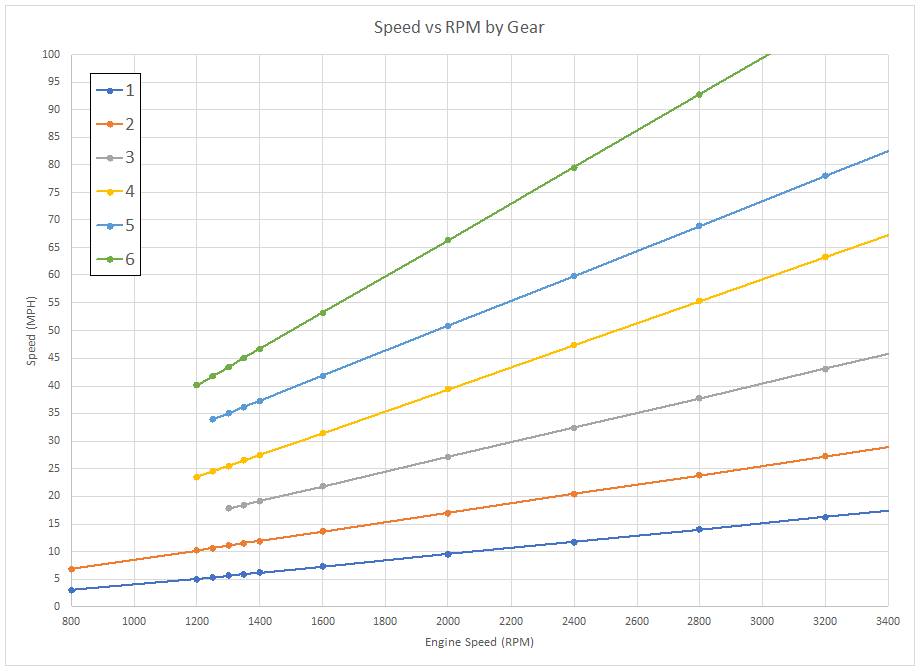
The next chart below illustrates how during typical driving in first gear the majority of the time the pedal position, resulting from my driving style, is in the 10-20% range. Going back to the first chart that shows how the APR tune shifts from (1) to (2) and looking at my typical input range, it can be seen that the APR TCU tune will predominantly shift from (1) to (2) at 1200-1700 rpm.
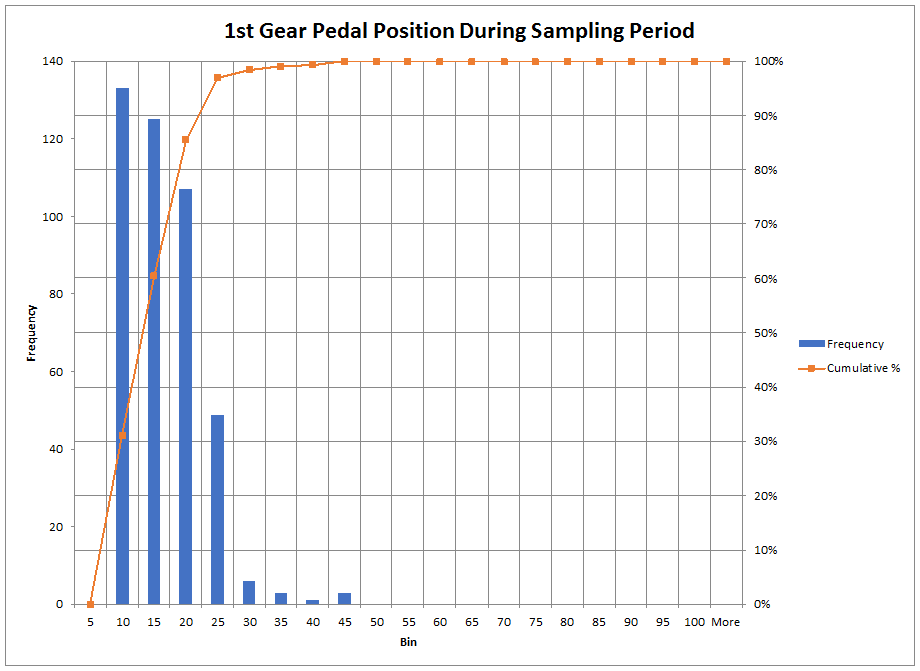
The result when combining driving style with TCU control logic is a situation where the APR tune tends to shift from (1) to (2) the majority of the time at 1200-1700, which is a little lower than I like at 10-20% pedal input.
The next chart illustrates the (2) to (3) shift which is much more to my liking. At low pedal input the TCU shifts around 1800 rpm but with increasing pedal input the TCU holds off shifting until higher engine speeds are reached. 40% pedal input is a “decent” request for acceleration and the TCU nicely holds off shifting until after the engine rpm reaches 3000.
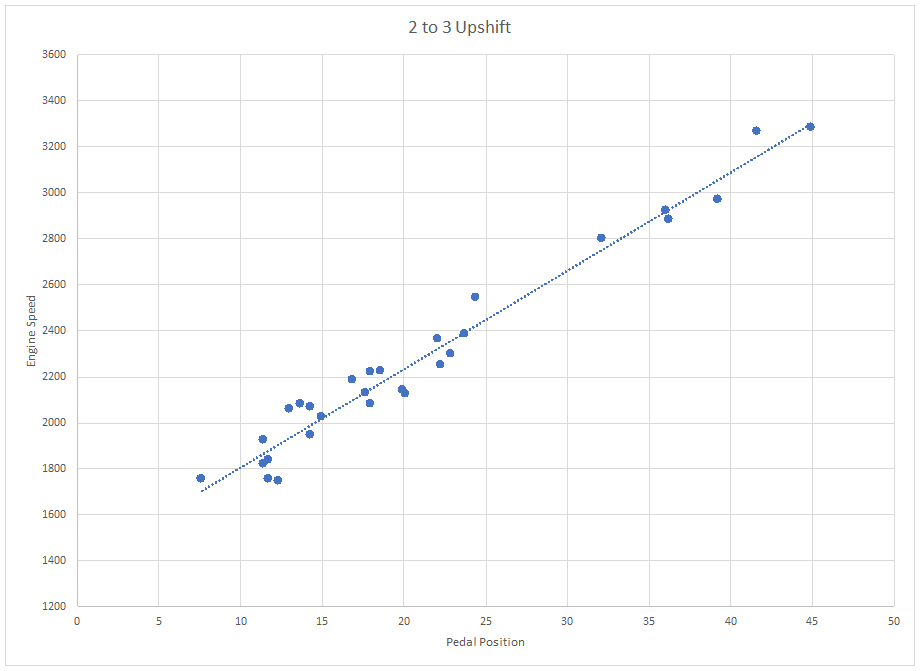
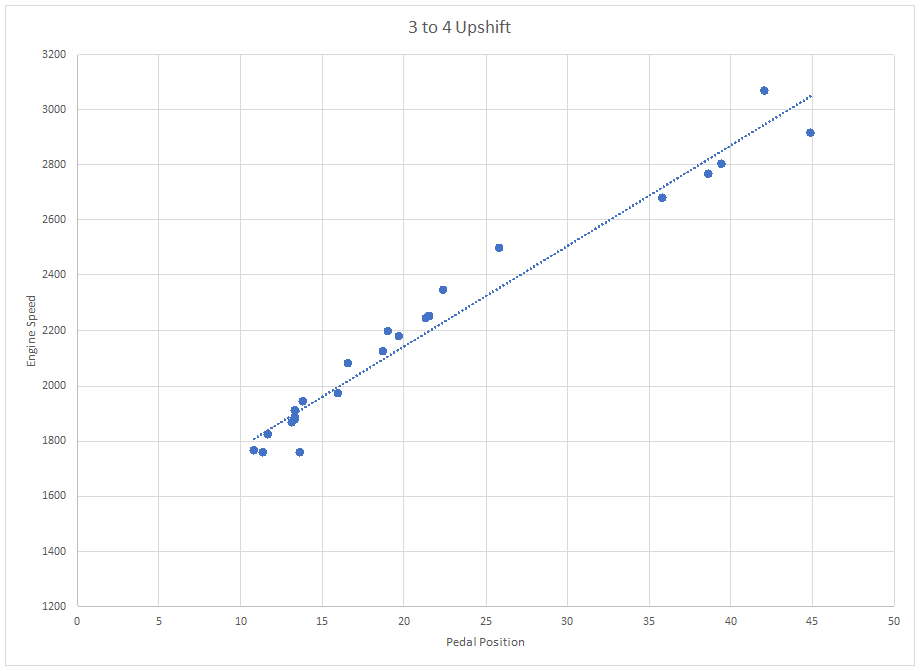
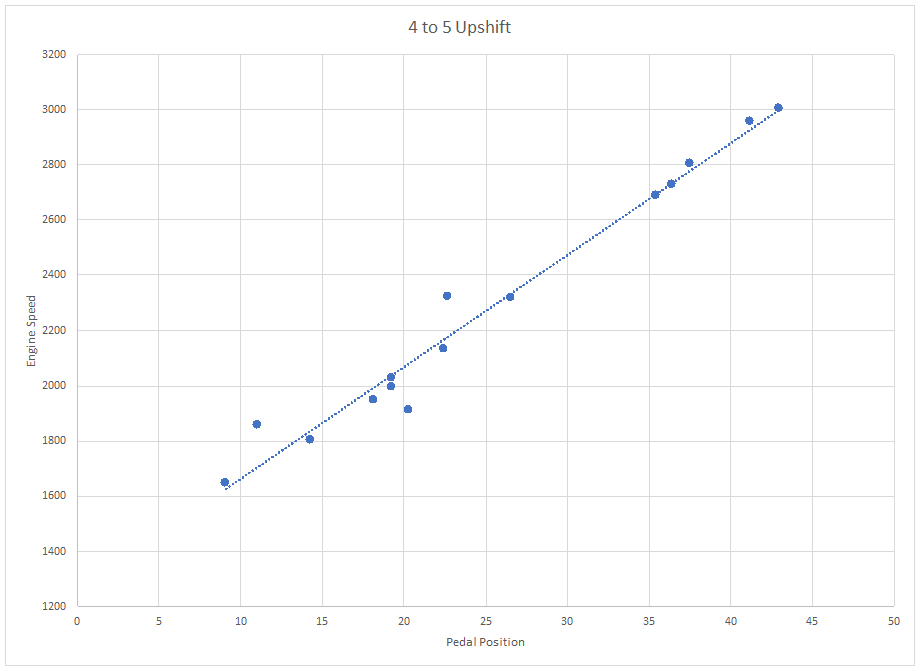
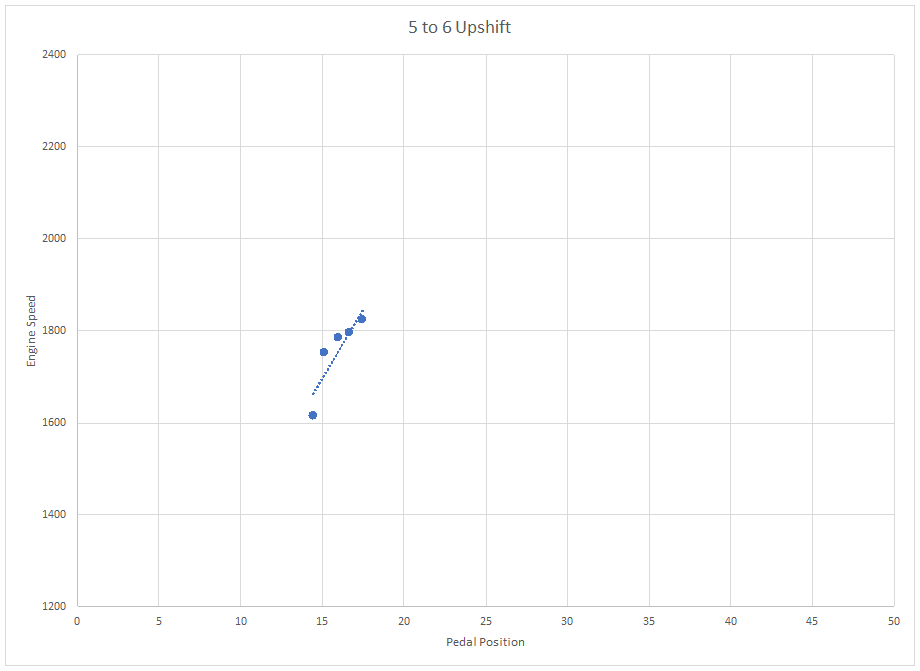
The 0 pedal input downshift captures the engine speed at which a downshift occurs when the vehicle is coasting. This setting plays a large role in how much a transmission will “gear hunt”, that is to cycle between two gears as the vehicle speed fluctuates. It also affects the arrival engine speed when the transmission downshifts. A higher engine speed at the downshift results in the engine turning at a higher speed in the next lower gear.
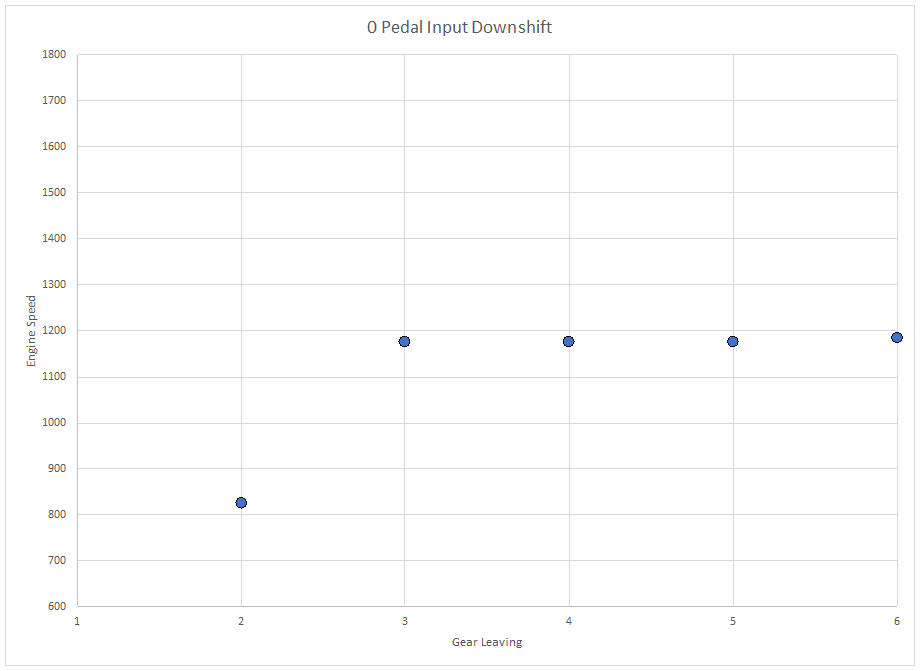
Kickdown is the action of the TCU to drop the gear down as increasing pedal input is made. This setting needs to balance allowing the vehicle to accelerate in the current gear and recognizing a condition where a greater rate of acceleration is requested that would benefit from being in a lower gear.
At lower engine speeds APR’s tune does a decent job of downshifting from (6) to (5) with light-moderate (30-40%) pedal input, but with only slightly higher engine speeds the pedal input required to downshift becomes greater than I like. The slope of the trend line should be greater for this tune to match my preference in response characteristic.
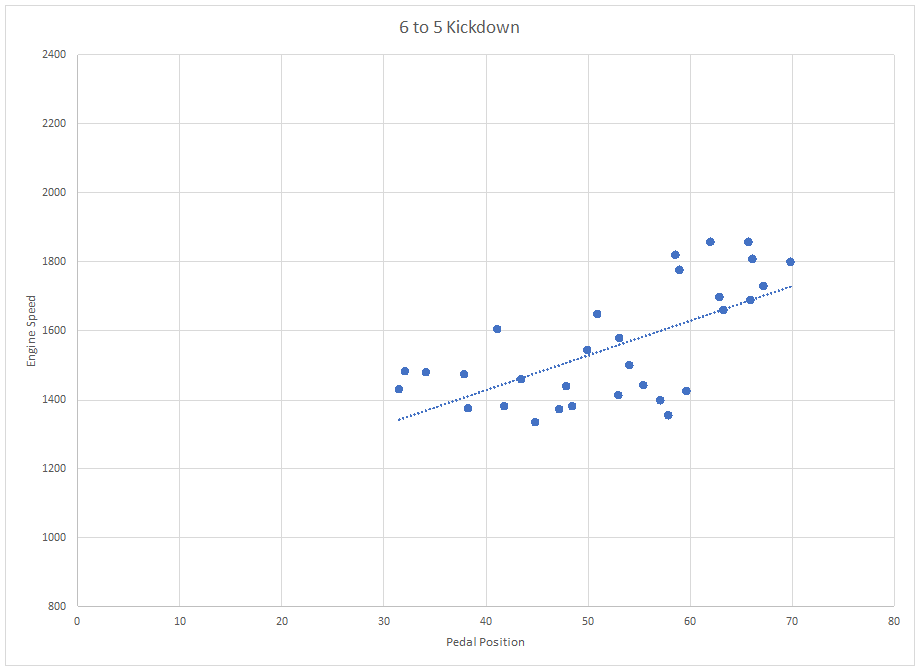
There hasn’t been enough data gathered for the (5) to (4) and (4) to (3) kickdowns, but the initial trends show responses that need some work to match my preferences.
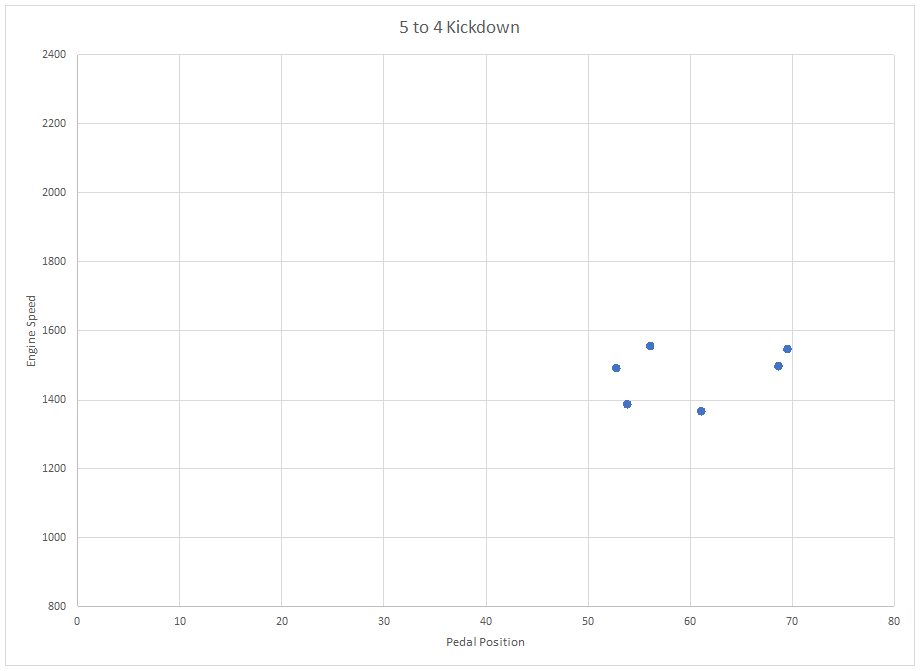
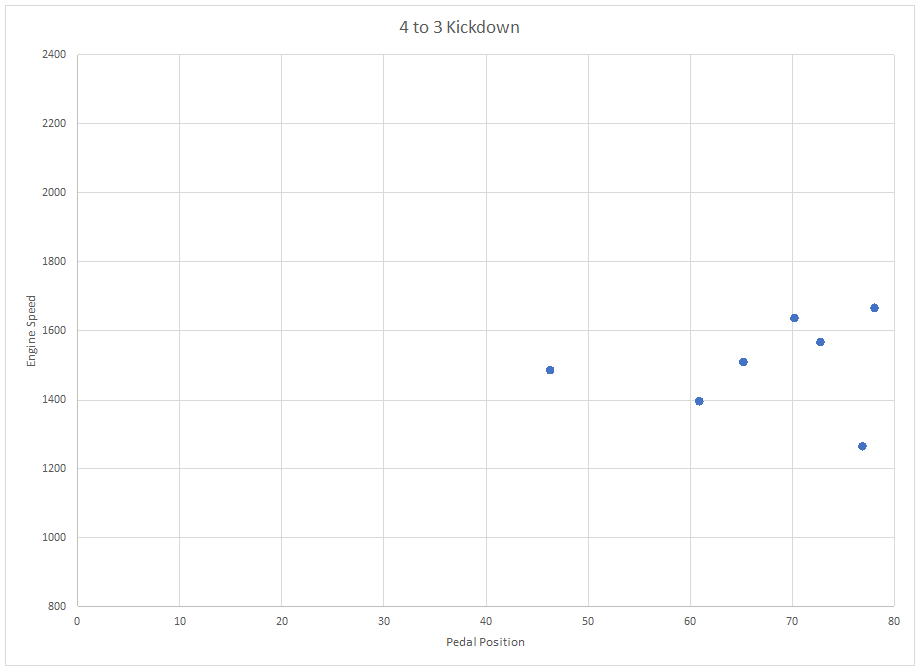
In comparison to Engine tuning that generally is limited to wide open throttle from 2000 rpm to redline, the tuning of a transmission TCU is much more complicated and satisfaction with the results are influenced by personal driving style.
